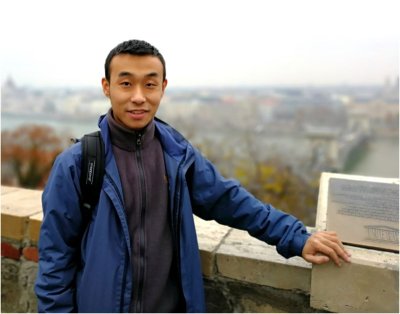Turbulent thermal convection: From Rayleigh-Bénard to vertical convection
Due to the COVID-19 crisis measures the PhD defence Qi Wang will take place (partly) online in the presence of an invited audience.
The PhD defence can be followed by a live stream.
Qi Wang is a PhD student in the research group Physics of Fluids (POF). His supervisors are prof. dr. D. Lohse from the Faculty of Science and Technology (TNW) and prof. R. Verzicco from the University of Roma.
 Turbulent thermal convection driven by a temperature difference is omnipresent in nature and it plays an important role in numerous industrial applications. Examples include thermal convection in the atmosphere, in the oceans, in the Earth’s mantle, in the Earth’s outer core, and in stars including our Sun.
Turbulent thermal convection driven by a temperature difference is omnipresent in nature and it plays an important role in numerous industrial applications. Examples include thermal convection in the atmosphere, in the oceans, in the Earth’s mantle, in the Earth’s outer core, and in stars including our Sun.
Rayleigh-Bénard convection (RBC) where a fluid layer in a cavity heated from below and cooled from above, is a classical model problem for the study of thermal convection. Another model problem is vertical convection (VC) where the fluid layer is heated/cooled at the sides. Both RBC and VC can be viewed as extreme cases of tilted convection where the tilt angle is 0for RBC and 90for VC.
This thesis studies the above three model problems for thermal convection, i.e. Rayleigh-Bénard convection (Part I), tilted convection (Part II), and vertical convection (Part III).
In Part I, we study non-Oberbeck-Boussinesq (NOB) effects either due to density maximum of cold water near 4 (Chap. 2) or due to large temperature differences (Chap. 3) in turbulent RBC. We also investigate multistability of convection roll states (Chap. 4) and metastability of the zonal flow (Chap. 5) in turbulent RBC.
In Part II, we focus on tilted convection. We report that tilting can promote flow reversals in a two-dimensional convection cell with aspect ratio 2 (Chap. 6). The global flow organization and heat transport for two-dimensional tilted convection with small aspect ratio 0.5 (Chap. 7) and large aspect ratios (Chap. 8) are also discussed. We further study NOB effects in three-dimensional tilted convection in Chap. 9.
In Part III, we investigate vertical convection, and we particularly focus on NOB effects in two-dimensional vertical convection in Chap. 10.

